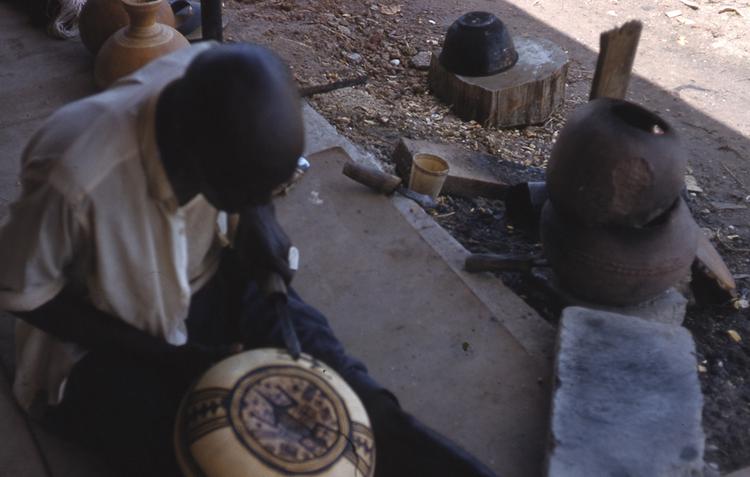
Community Commentary by Ashiyanbi, Akeem Abiodun within research project: 'Rethinking Relationships and Building Trust around African Collections' 2021
The words calabash and gourd are often used interchangeably. Calabash is a fruit of a creeping/climbing plant which grows easily in almost every part of Nigeria. It produces fruits that come in various shapes and sizes which determine their uses. The picture depicts a calabash carver decorating using the pyro-engraving style of burning designs onto the surface using hot iron. The tag on the picture states it was done in Lagos, which is quite unusual because Lagos is not really known for calabash decoration like Oyo Alaafin. Bottle gourds are also called calabashes which sometimes are confused with the hard, hollow fruits of the unrelated calabash tree. The calabash is known by different names in Nigeria, depending on the area or people. The Yoruba call it “Igba”, the Igbo call it “Ugba”, while the Hausa call it “Duma” or “Kwarya”. It is used typically as utensils in rural households. It can be used to clean rice, carry/store water/palm wine and as food containers. It is believed to add a palatable taste to water as well as help keep it cool. Smaller sizes are used as drinking bowls for palm wine. In Nigeria, the calabash can be made into beautiful instruments such as rattles, locally known as Sekere in Yoruba and Ichaka in Igbo and Idoma. It is loosely covered in beads and produces a rattling sound when tapped or shaken to compliment other instruments. Some traditional eating places entertain tourists by serving them native recipes in calabashes. In the modern settings, the calabash is mostly used as home décor. The dried gourd or calabash is usually decorated by a craftsman who carves intricate repetitive linear and curved patterns into the calabash and changes the plain look into sophisticated works of art. The calabashes may be stained in different colours by rubbing them with millet leaves, with indigo among others. They can also be darkened by hanging them in a smoky room. Calabashes have been used for centre pieces for a dining table. It can be used as a wall décor; it can be carved into a vase and can also be carved into commemorative wall hanging. The calabash is very versatile and adds that African/exotic feel to any place it decorates. Calabashes are decorated by different techniques and methods according to the tradition adopted in the particular area. There are varieties of designs and patterns which the carvers adopt in his decoration. This is achieved by applying techniques that include scraping, carving, scorching, pyro-engraving and pressure-engraving. In most places around Nigeria, the techniques are combined. Carvers in Oyo and Kwara states combine the scraping, carving and engraving techniques. In Adamawa state the pyro-engraving and the engraving techniques are combined while in Sokoto, scraping, carving and scarification as well as painting methods are utilised. A popular saying in Yoruba runs as follows:- bi Onirese ba ko ti ko ba fingba mọ, eyi to ti fin sile ko lee parun. This means that even if the calabash carver no longer produce, the ones earlier created will always testify to the greatness of his skills and prowess.



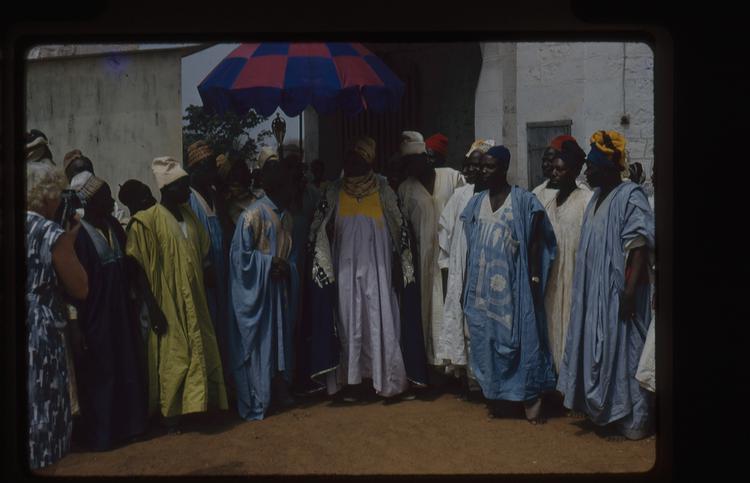
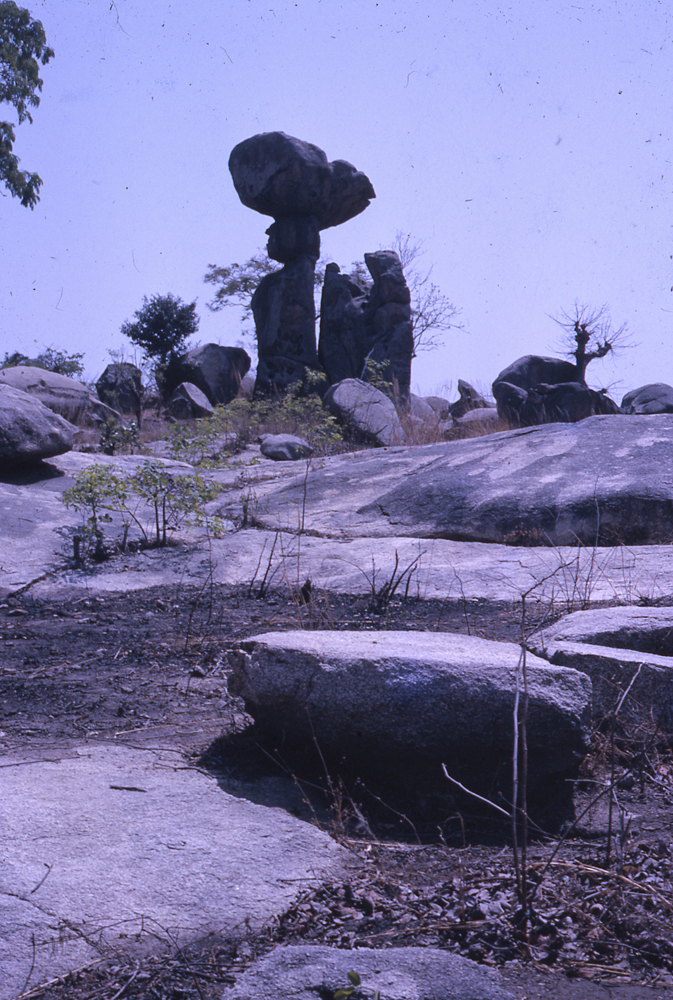
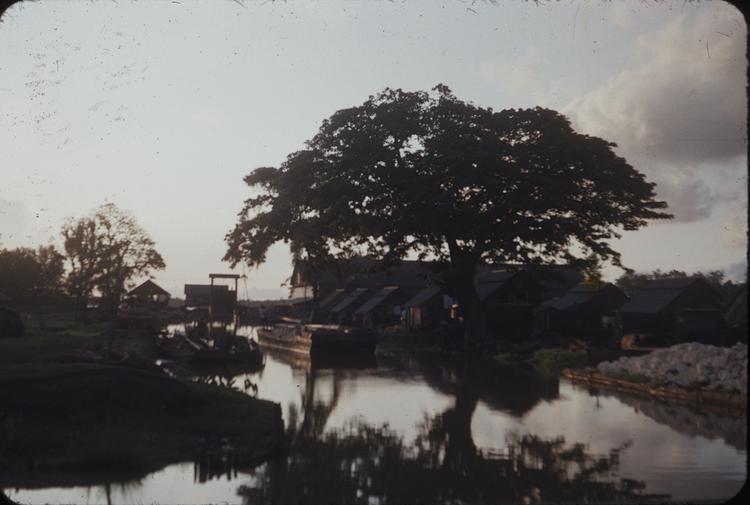
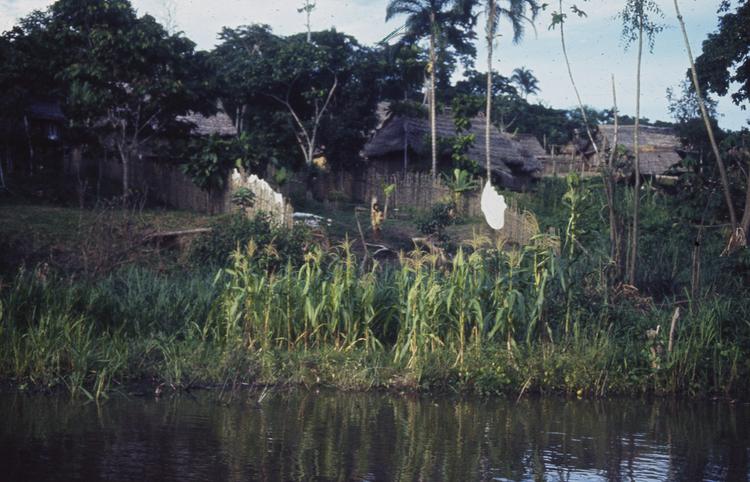
Community Commentary